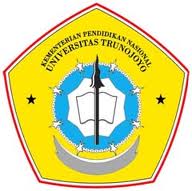Anda belum Log-in!
Silahkan Log in
Selamat Datang di Portal Digital Content Publisher
Minggu , 19 October 2025
Perpustakaan sebagai jantung pendidikan tinggi di Indonesia, harus mampu memberi kontribusi yang berarti bagi pelaksanaan proses belajar mengajar di perguruan tinggi.
di-posting oleh 190331100054 pada 2023-08-02 02:08:33 • 331 klik
Analisis Perbaikan Kualitas Pada Proses Produksi Kerupuk Menggunakan Metode Fault Tree Analysis (FTA) dan Failure Mode and Effect Analysis (FMEA)(Studi Kasus: UMKM Kerupuk Stik Dewi)
Analysis of Quality Improvement in the Cracker Production Process Using the Fault Tree Analysis (FTA) and Failure Mode and Effect Analysis (FMEA)(Case Study: UMKM Kerupuk Stik Dewi)
disusun oleh FAHRI DWI MARTALANANG
| Subyek: | Perbaikan kualitas Fault Tree Analysis dan Failure Mode and Effect Analysis Produk cacat |
| Kata Kunci: | FTA dan FMEA Perbaikan Kualitas Produk cacat |
[ Anotasi Abstrak ]
UMKM Kerupuk Stik Dewi merupakan industri menengah kebawah yang memproduksi produk makanan ringan yakni kerupuk. UMKM Kerupuk Stik Dewi memiliki permasalahan terkait jumlah produk yang cacat hampir melebihi jumlah produksinya yaitu 30%. Tujuan dari penelitian ini untuk mengetahui jenis cacat dan penyebabnya serta usulan perbaikan untuk mengatasi munculnya produk cacat. Proses analisis perbaikan dilakukan dengan menggunakan metode Fault Tree Analysis (FTA) dan Failure Mode and Effect Analysis (FMEA) pada analisis jumlah produksi selama 30 hari. Hasil dari penelitian ini menunjukan terdapat empat jenis defect yang ditemukan dalam produksi kerupuk yaitu cacat ukuran tidak sama yang disebabkan oleh faktor alat dan mesin serta kesalahan manusia, cacat bentuk tidak sempurna yang disebabkan oleh kesalahan prosedur pengukusan, kesalahan manusia serta kendala pada mesin dan alat, cacat gosong (overcooked) yang disebabkan oleh kesalahan manusia dan kesalahan prosedur penggorengan dan cacat kontaminasi benda asing yang disebabkanrnoleh sanitasi pada proses, mesin dan alat, lingkungan serta pekerja sendiri. Cacat gosong (overcooked) memperoleh nilai RPN terbesar yaitu 512 diikuti cacat bentuk tidak sempurna 320, ukuran tidak sama 300 dan kontaminan pada kerupuk 150. Usulan perbaikan yang bisa diterapkan adalah penambahan pekerja, pemberian instruksi kerja, perawatan pada mesin serta peralatan,rnmelakukan pengawasan kinerja, rutin mengganti minyak goreng dan menjaga sanitasi baik itu alat, mesin, pekerja dan lingkungan industri. Penerapan usulan perbaikan diperkirakan mampu menurunkan jumlah produk cacat yang semula sekitar 30% turun menjadi dibawah 30%.
Deskripsi Lain
UMKM Kerupuk Stik Dewi is a middle to lower industry that produces snack products, namely crackers. UMKM Kerupuk Stik Dewi have problems related to the number of defective products almost exceeding the amount of production, which is 30%. The purpose of this study is to determine the types of defects and their causes well proposed improvement to overcome the emergance of defective products. The repair analysis process was carried out using the Fault Tree Analysis (FTA) and Failure Mode and Effect Analysis (FMEA) methods in the analysis of production quantities for 30 days. The results of this study show that there are four types of defects found in cracker production, namely unequal size defects caused by tool and machine factors and human error, imperfect shape defects caused by steaming errors, human errors and constraints on machines and tools, burnt defects (overcooked)) caused by human error and frying errors and foreign body contamination defects caused by sanitation of processes, machinery and tools, the environment and workers themselves. Overcooked defects obtained the largest RPN value of 512 followed by incomplete shapes defects 320, unequal size 300 and contaminants in crackers 150. Proposed improvements that can be applied are adding workers, providing work instructions, maintenance on machinery and equipment, conducting performance supervision, routinely changing cooking oil and maintaining sanitation both tools, machines, workers and the industrial environment. The implementation of the proposed improvement is estimated to be able to reduce the number of defective products which were originally around 30% down to below 30%.
| Kontributor | : MOJIONO, S.TP., M.Si.;Dr. BURHAN, S.T., M.T. |
| Tanggal tercipta | : 2023-07-20 |
| Jenis(Tipe) | : Text |
| Bentuk(Format) | |
| Bahasa | : Indonesia |
| Pengenal(Identifier) | : TRUNOJOYO-Tugas Akhir-28928 |
| No Koleksi | : 190331100054 |
Ketentuan (Rights) :
2023
 Download File Penyerta (khusus anggota terdaftar)
Download File Penyerta (khusus anggota terdaftar) 1. TRUNOJOYO-Tugas Akhir-28928-Abstract.pdf - 12 KB
1. TRUNOJOYO-Tugas Akhir-28928-Abstract.pdf - 12 KB 2. TRUNOJOYO-Tugas Akhir-28928-Cover.pdf - 714 KB
2. TRUNOJOYO-Tugas Akhir-28928-Cover.pdf - 714 KB 3. TRUNOJOYO-Tugas Akhir-28928-Chapter1.pdf - 14 KB
3. TRUNOJOYO-Tugas Akhir-28928-Chapter1.pdf - 14 KB 4. TRUNOJOYO-Tugas Akhir-28928-Chapter2.pdf - 216 KB
4. TRUNOJOYO-Tugas Akhir-28928-Chapter2.pdf - 216 KB 5. TRUNOJOYO-Tugas Akhir-28928-Chapter3.pdf - 433 KB
5. TRUNOJOYO-Tugas Akhir-28928-Chapter3.pdf - 433 KB 6. TRUNOJOYO-Tugas Akhir-28928-Chapter4.pdf - 535 KB
6. TRUNOJOYO-Tugas Akhir-28928-Chapter4.pdf - 535 KB 7. TRUNOJOYO-Tugas Akhir-28928-Conclusion.pdf - 10 KB
7. TRUNOJOYO-Tugas Akhir-28928-Conclusion.pdf - 10 KB 8. TRUNOJOYO-Tugas Akhir-28928-References.pdf - 204 KB
8. TRUNOJOYO-Tugas Akhir-28928-References.pdf - 204 KB 9. TRUNOJOYO-Tugas Akhir-28928-Appendices.pdf - 606 KB
9. TRUNOJOYO-Tugas Akhir-28928-Appendices.pdf - 606 KB Dokumen sejenis...
Dokumen sejenis...Tidak ada !
 Dokumen yang bertautan...
Dokumen yang bertautan...- PELAPORAN BIAYA KUALITAS UNTUK MEMINIMALKAN TERJADINYA RISIKO PRODUK CACAT DALAM MENINGKATKAN PROFITABILITAS PERUSAHAAN PADA CV. KAPUAS INTI SARANA SURABAYA
- ANALISIS KAPABILITAS PROSES PENGOVENAN PADA PRODUKSI ROTI (STUDI KASUS PADA UKM ROTI RIZQIA KAMAL, BANGKALAN)
- USULAN PERBAIKAN KUALITAS PRODUK PYLON A320 PADA PROGRAM SPIRIT AEROSYSTEM MENGGUNAKAN STATISTICAL QUALITY CONTROL (SQC) DI PT. DIRGANTARA INDONESIA
- Perbaikan Kualitas Produk Garam dengan Menggunakan Metode FMEA (Failure Mode Effect Analysis) di CV.Anugrah Sinar Laut
- perbaikan kualitas pelayanan obyek wisata pemandian air panas padusan dengan metode servqual
 Kembali ke Daftar
Kembali ke Daftar 